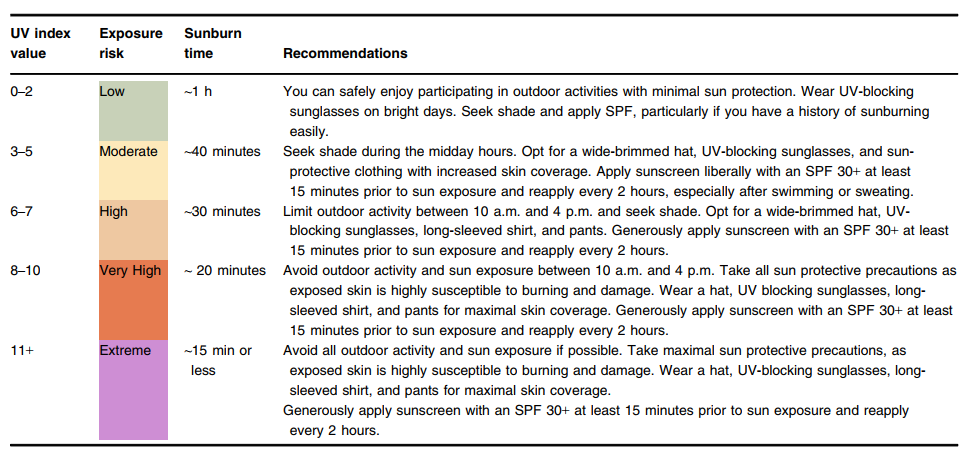
Introduction
According to the Centers for Disease Control and Prevention (CDC), nearly 6 million people in the United States undergo treatment for skin cancer annually, with the incidence of new cases on the rise. The most common forms, basal cell carcinoma (BCC) and squamous cell carcinoma (SCC), are typically treatable but can be costly and leave lasting marks. Conversely, melanoma, a more severe type of skin cancer, poses a greater risk of fatality.
The primary cause of most skin cancers is excessive exposure to ultraviolet radiation (UVR) from the sun and indoor tanning devices. In 2019, there were 88,059 new cases of melanoma diagnosed, resulting in 8,092 deaths. Despite a decrease in tanning bed use, approximately 900,000 high school students and 7.8 million adults continue this practice. Sunburn and tanning bed usage are most prevalent among non-Hispanic White individuals, who also exhibit the highest rate of new skin cancer cases.
Outdoor workers face significant risks due to prolonged exposure to solar UVR, increasing their susceptibility to non-melanoma skin cancers such as SCC and BCC. Implementing effective sun protection strategies is crucial for safeguarding these individuals. Optimising skin cancer prevention through these measures not only protects outdoor workers but also reduces the overall burden on healthcare systems.
The High Cost of Skin Cancer
The CDC reports an annual medical cost of $8.9 billion for treating all skin cancer types in the United States. Approximately 33,826 emergency department visits for sunburn are recorded yearly, costing around $11.2 million. Prohibiting indoor tanning for minors under 18 could prevent an estimated 61,839 melanoma cases and 6,735 deaths among young people aged 14 or younger in 2013, potentially saving over $342 million in treatment expenses.
Understanding UV Radiation and Its Impact
UVR from the sun is a major risk factor for skin cancer, divided into UVA, UVB, and UVC types. While UVC is mostly absorbed by the ozone layer, UVA and UVB reach the Earth’s surface, posing health risks. UVA primarily causes long-term skin damage, while UVB contributes to sunburn and skin cancer.
Outdoor workers, including construction workers, agricultural workers, and mail carriers, are particularly vulnerable due to prolonged UVR exposure. Despite available sun protection strategies, maintaining adequate sun safety remains challenging for many in these professions.
Measuring UV Exposure and Skin Cancer Risk
Accurate measurement of individual UV exposure is crucial for assessing skin cancer risk. The World Health Organization (WHO) developed the global solar UVI to monitor UVR levels based on factors like sun elevation, latitude, cloud cover, and ground reflection. Despite its utility, public awareness of the UVI, particularly among outdoor workers, remains low.
Research indicates that outdoor workers face a significantly higher risk of SCC and BCC due to cumulative UV exposure, with elevated skin cancer prevalence and pigmented lesions observed in those with predominantly outdoor occupations. Robust sun protection strategies are essential to mitigate these risks.
Optimising Skin Cancer Prevention
Outdoor workers can significantly reduce UVR exposure by wearing long clothing, wide-brimmed hats, and UV-protective sunglasses. Applying sunscreen with at least SPF 30, 15 minutes before sun exposure and reapplying every two hours, is essential. Scheduling outdoor activities outside peak UV intensity hours (10 a.m. to 4 p.m.) and seeking shade during these times further mitigates risks. Education on UVR risks and sun safety practices, including understanding the ultraviolet index (UVI), is crucial for informed decision-making. These preventive measures are cost-effective and beneficial not only for the outdoor workers’ quality of life but also for reducing the burden of skin cancer on healthcare systems, leading to substantial savings through prevention.

Challenges in Implementing Sun Protection
Despite established sun protection strategies, many outdoor workers struggle to maintain adequate sun safety. Data from the National Health Interview Survey (NHIS) indicates that agricultural workers are more likely to wear long clothing compared to construction workers. However, sunscreen use and shade-seeking behaviours are less prevalent in both groups.
Occupational constraints often hinder adherence to sun protection measures. Certain job requirements may limit wearing long clothing or taking frequent breaks, while rural populations face higher incidental UV exposure compared to urban settings, complicating sun safety efforts.
Conclusion
Effective sun protection strategies are critical for reducing skin cancer risks among outdoor workers. By wearing protective clothing, applying sunscreen, seeking shade, and scheduling outdoor activities wisely, individuals can significantly decrease their UVR exposure. Education and awareness play vital roles in promoting sun safety practices. Healthcare providers should actively educate outdoor workers on sun protection and UVI use. By adopting these measures, not only would outdoor workers’ quality of life improve, but overall healthcare costs would also decrease.
